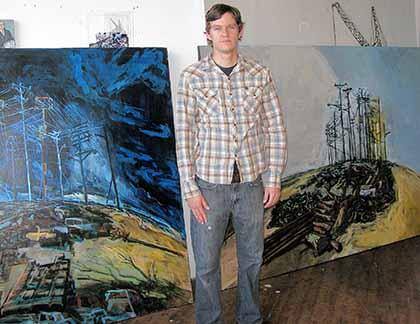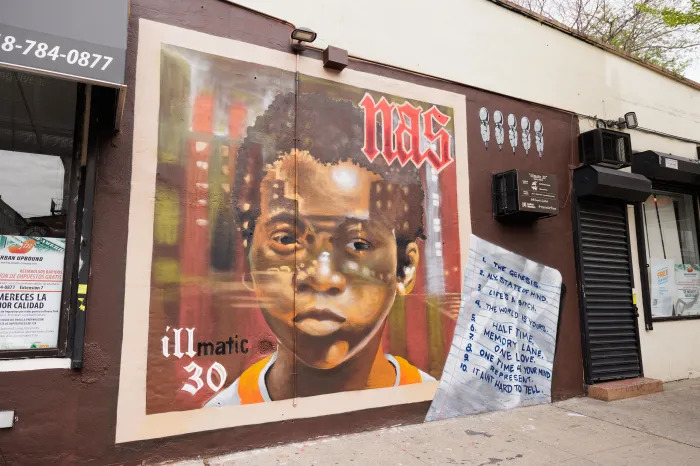By Allison Plitt
When Astoria artist Jason Mitcham created the video animation for the Avett Brothers’ song “Head Full of Doubt/Road Full of Promise,” he spent six weeks this past year painting a picture, filming it, altering the drawing and then refilming it 2,600 times.
The end result is a four-minute-and-20-second video about a piece of land developed into a suburb and later into a city that eventually collapses into rubble. The piece of property then returns to its original state as a grass field with the exception of a billboard and a road, which were the initial constructions on the land.
Because Mitcham had previously created animations from his paintings that had dealt with land development, the Avett Brothers’ video was an appropriate medium for him to show his work.
“When dealing with the landscape, I had to logically involve time within the painting,” he said. “The only way I could do that was with an animation or with a video that could show the development of a painting or of a landscape.”
While creating the video, Mitcham viewed an exhibit at the Museum of Modern Art about William Kentridge, a South African artist famous for the animations he produces by filming modifications he makes within his drawings.
Influenced by Kentridge since art school, Mitcham said, “William Kentridge really developed the process that I’m using. For him, it was a series of drawings that comprise a film — one drawing that would be slightly altered, traced and redrawn. It creates this ghost-like image. It was just something that I connected to right away. I knew I was really interested in that way of working.”
Mitcham’s interest in land development is rooted in his childhood in Greensboro, N.C. He recounted that “Growing up in North Carolina in the ’80s and ’90s, I just saw this huge sprawl. I don’t think you could put your finger on any other time in the history of that state where that much change had been brought about.”
His father owned a civil engineering and land surveying firm where Mitcham worked during the summer.
“When I was in college, I would work on the field crews where we would go out and actually survey sites — anything from residential to highways. I had seen a site go in a matter of a month or less from woods to a suburban development.”
While attending the bachelor of fine arts program at East Carolina University, Mitcham met Scott Avett, one of the lead singers of the Avett Brothers. Mitcham continued his studies at the master of fine arts program at the University of Florida at Gainesville, where he met fellow art student Erika Mahr, whom he would later marry.
During his years at Gainesville, Mitcham read books by French philosophers Jean-Paul Sartre and Albert Camus, who were associated with the existentialist movement, capturing the disillusionment of society following World War II.
“I think the imagery in their books was something I was connected to on an emotional level,” said Mitcham. “Existentialism being these post-apocalyptic landscapes I was painting. I think that’s how the paintings got read by a lot of people, but they were much more about this isolation, an alienation of something set off by itself.”
Mitcham and Mahr both work out of a shared studio space in Long Island City, where one can look out the window and see the billboard Mitcham painted for the music video.
But his paintings are not trying to urge people to protest against land development per se.
“I think it’s more about being conscious of why it’s developed the way it is,” said Mitcham.
For more information about Jason Mitcham, his artwork and upcoming exhibits, visit his website at jasonryanmitcham.com.






























